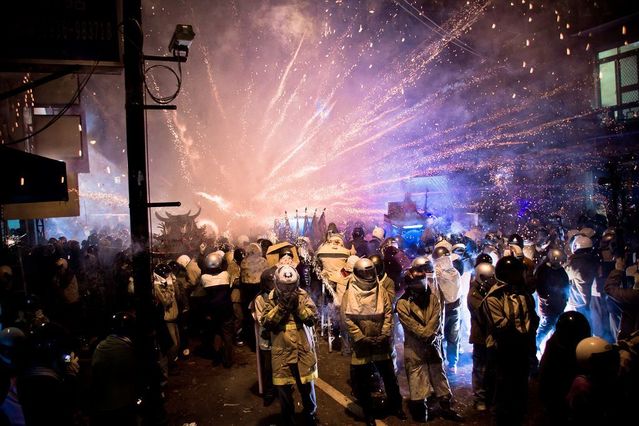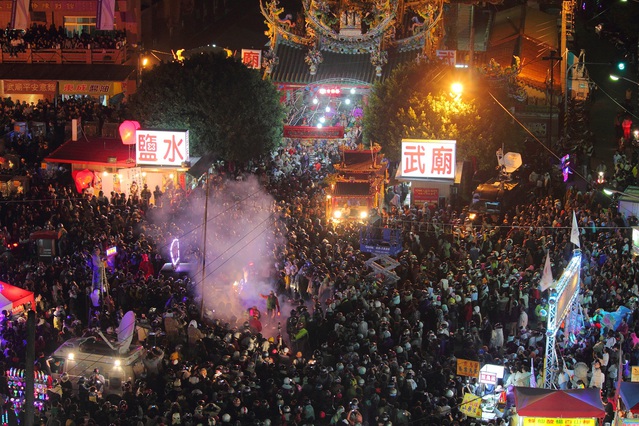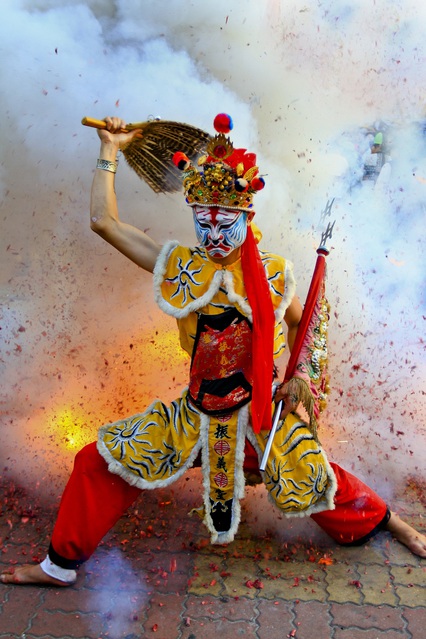Millions of lanterns will light up the night sky of Taiwan on February 11 to observe the Lantern Festival, marking the fifteenth day of the first month of the lunar calendar.
Much like Diwali is celebrated in India, the Lantern Festival in Taiwan is all about the lights, seeking god’s protection and good luck throughout the year.
“The Lantern Festival is the biggest and most celebrated festivals of Taiwan after the Chinese New Year. The festival, this year, will officially start on February 11 in the county of Yunlin. Several dance and music performances across the island imbibe a festive and rapturous mood. It’s the perfect time to visit Taiwan and discover its diverse products, ranging from luxury resorts, amusement parks, shopping in night markets, to nature and hot springs, tribal culture and much more,” explains Noel Saxena, Country Head, Taiwan Tourism, Representative Office in India, managed by New Delhi-based Think Strawberries.
Hosting the festival inauguration for the first time in its 28-year history, the south-western county of Yunlin is displaying 3,000 lanterns on a plot of land spread over more than 50 hectares, making it the largest number of lamps and the biggest display area ever in the history of the Lantern Festival. This year’s theme is ‘friendly earth, diverse cultures’, looking at an eco-friendly approach to the festival and the diverse cultures, traditions and beliefs in the island.
D-Day
In Taipei, the Taiwanese capital, the preparations for the festival is going on in an equally hectic fashion. An old lady, guessing whose age is a hazardous task, sits in her shop at the Yongle market, the oldest market of the bustling capital city. She is preparing, with a unique mix of patience and dexterity, beautiful hand-painted lanterns of all sizes. “Most of our ancestors came from China. The Chinese believe that we could see the deities descend to the Earth during the first full moon of the New Year. Over the years, the fire torches that they had used to look for spirits became the Lantern Festival of today,” she muses in Mandarin, while her eyes and hands stay busy with the artwork of the lantern that she is preparing.
Though the roots of Lantern Festival may be found in Buddhism, the predominant religion of the earlier days, it is now celebrated by all, irrespective of their spiritual inclinations. At the Sun Moon Lake in Nantou County in central Taiwan, a one-and-a-half-hour drive northeast of Yunlin, Esther Chen, a young Christian lady, working in the tourism industry, says, “Even if the tradition was originally Buddhist, today, all Taiwanese celebrate it with fervour as every city or county has its own set of traditions and beliefs for the celebration of this festival.” The island, located off the southeastern coast of the Chinese mainland, has an interesting mix of cultures from Mainland China as well as Japan, and is home to 16 different tribes. In the Yanshuei district in southwest Taiwan, the legend goes that the festival started in the late 19th century when the locals invoked the god, Guan Gong (or martial god) with fireworks to fight the endemic of cholera and plague that was afflicting the trading port.
Folklore & Modern Adaptation
According to various sources, the Lantern Festival is an ancient Chinese tradition that dates back over two millennia. The origin of the festival is not clear, but, it is said that it was started by an emperor of the Han Dynasty (206 BC-220 AD), who was a devout Buddhist and who ordered his people to display lights on the fifteenth night of the first month of the lunar year to pay respects to Buddha.
Under Tang Dynasty (618–907 AD), the emperors used to celebrate the festival by ordering hundreds of beautiful women to sing and dance with lanterns in the brightly-lit plaza.
Nowadays, in Taiwan, the festival is celebrated in a modern way, with electric lanterns, artistic installations, light & sound show, laser lights, fireworks etc. “Here, we celebrate in a manner which is unlike how it is in China, for example. We are more friendly and more open to share our culture and highlight our different traditions and beliefs,” adds Chen.
Under the bright full moon, participants prepare special food, perform live music and traditional dances on the streets, notably the lion-and-dragon dances. But, 2017 is being marked as the ‘Year of the Rooster’, according to the Chinese calendar, hence, don’t be surprised if you see much more than the dragons and lions on the streets of Taiwan.
For live coverage of the Lantern Festival from Yanshuei on Saturday, tune in to our Facebook page @indiaoutboundmagazine. For a more detailed coverage of Taiwan as a destination, visit us on Twitter @mediaindiagroup or on Instagram @media.india.group. Also, keep an eye out for the upcoming issue of the India Outbound magazine.
Colour codes of the lanterns:
Red: Good luck
Rose: Love
White: Brilliant future
Blue: Professional success
Green: A work promotion
Light purple: Intelligence
Peach: A good marriage
Orange: Chance
Yellow: Wealth


